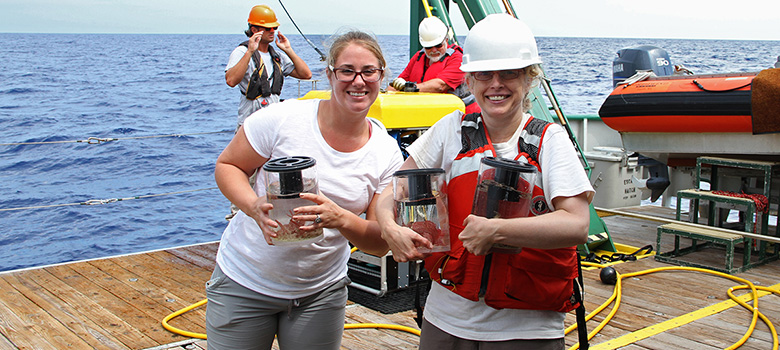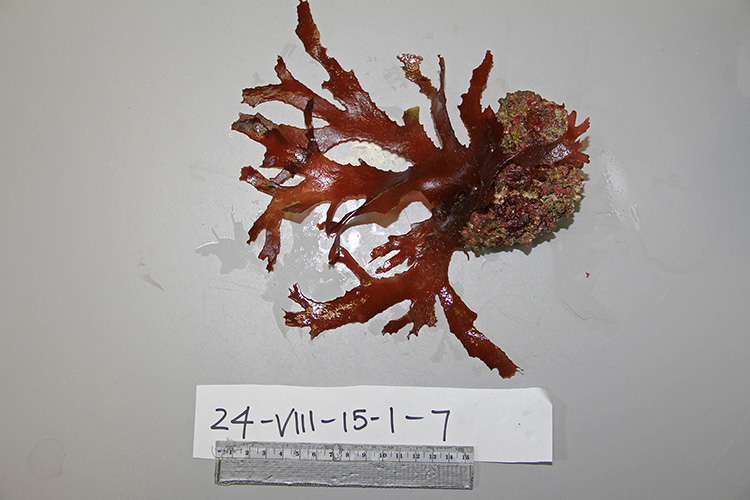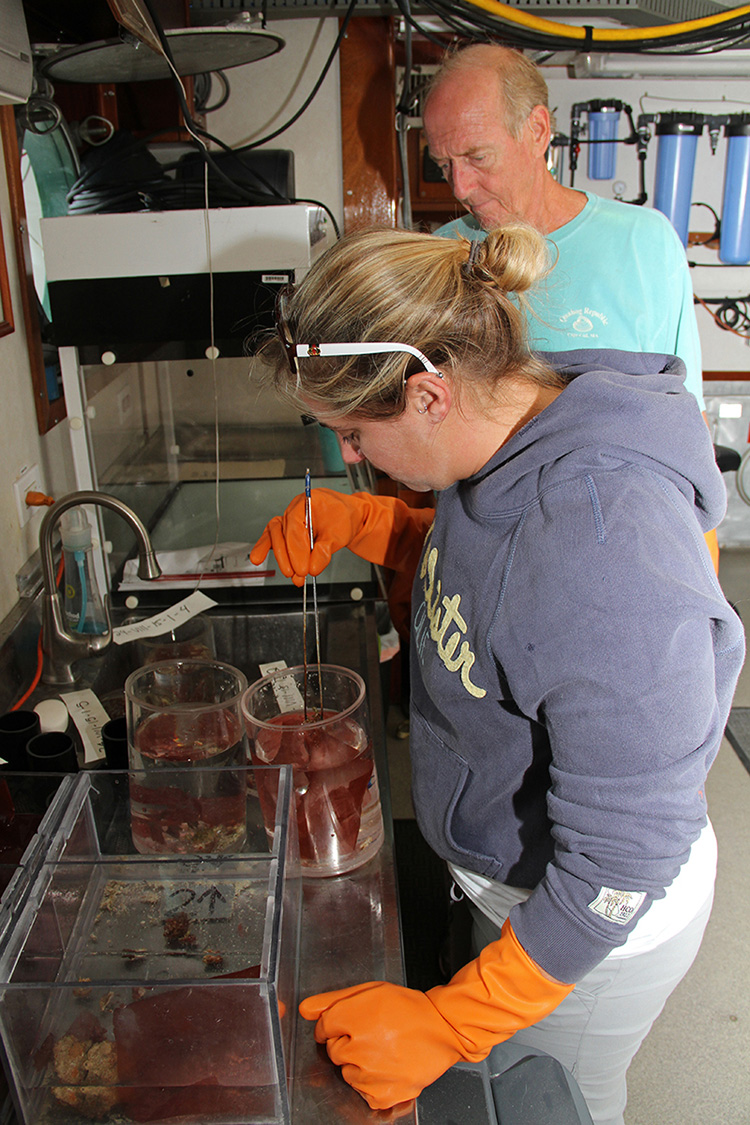
By Jana Ash - Graduate Student - Halmos Colleges of Natural Sciences and Oceanography, Nova Southeastern University
August 24, 2015

Kimberly Puglise (right) and Jana Ash (left) carry sample bins full of specimens from the remotely operated vehicle on deck into the lab for processing. Image courtesy of Brian Cousin, FAU Harbor Branch. Download larger version (jpg, 477 KB).
Two days before the Research Vessel Walton Smith set sail for the final cruise to Pulley Ridge, I found out that I would be aboard. I received a call from Stephanie Farrington, Harbor Branch Oceanographic Institute, the Wednesday before everyone was to report to the ship Friday night, that a spot opened on the cruise and she wanted me aboard. Me!!!!

An unidentified Rhodophyta, or red alga, collected by the Mohawk remotely operated vehicle. Image courtesy of Brian Cousin, FAU Harbor Branch. Download larger version (jpg, 478 KB).
Of course, I had to check with my boss at Broward County if it was possible to even think of attending. To my delight, he was thrilled for me to have this opportunity to further my career and explore the deep-sea world first hand.
The stars aligned and I was able to turn in my Master’s thesis and complete my graduate degree the morning we were supposed to be at the ship. Needless to say, this is a very exciting time for me, including the fact that this is my first research cruise. I was not able to participate in the cruise on which the data for my thesis was collected, thus, being asked to be a part of the ‘Connectivity’ cruise was an enormous opportunity for me.

John Reed and I remove specimens from the sample bins to be photographed and placed in glass jars with preservative for further analysis back on land. Image courtesy of Brian Cousin, FAU Harbor Branch. Download larger version (jpg, 375 KB).
John Reed and Stephanie Farrington aided me tremendously with my thesis research and I look up to them more than they know. Stephanie without question has taken me under her wing on this cruise; she is an amazing person and mentor.
Today, she introduced me to her database in which she records all the organisms we see during our remotely operated vehicle (ROV) dives each day. Learning all the organisms is not easy, but she was more than willing to let me take the wheel and get involved. During the three to four-hour ROV dives, we collect specimens using the ROV’s suction hose and manipulator arm and bring them to the surface to be identified and labeled. When the ROV returns to the ship, the specimens are taken into the lab to be photographed, identified, and preserved.
Our first dive today brought in 13 specimens of coral, sponges, and algae. Lunch was served and then we did it all over again in the afternoon. I am truly blessed to be apart of this adventure and can’t wait to see what the days ahead have in store